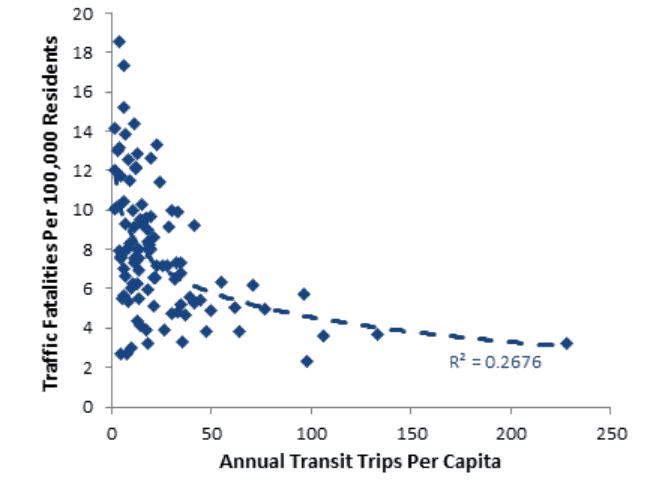In the list of things that sound American, owning a car would possibly be at the top. This is not just a stereotype anymore; the U.S. ranks second in the world in the list of motor vehicles owned, with 910 vehicles per 1,000 people – only below San Marino, a microstate less than one-tenth the size of New York City. With so many vehicles, it is crucial to look at ways to reduce accidents on the road, because traffic deaths in the U.S. are nearly three times as high as in comparable economies like Australia, Germany, Israel and the U.K.
A recent study by the American Public Transportation Association (APTA) shed light on how a slight increase in public transit options would lead to “disproportionately large traffic safety benefits.”
Lately, there has been a significant push from concerned governments and environmental organizations around the world for wider adoption of public transportation, because it would not just reduce traffic bottlenecks, but also lessen carbon emissions. And with fewer vehicles on the road, accidents due to driving negligence would also be proportionately fewer.
Statistics on the rate of traffic fatalities in cities based on the residents’ annual public transit trips sheds light on the importance of public transit systems. It can be seen from the graph that the more trips a person takes on public transit (instead of personal mobility transport), the smaller the probability of having a fatal accident is. For instance, city dwellers who average more than 50 annual transit trips have nearly half the average traffic fatality rate when compared to cities with residents who average fewer than 20 annual transit trips.

The age of drivers also has a direct bearing on the frequency of accidents. APTA mentions that people between the age of 15-25 tend to have twice the traffic fatality rates as the total population average. However, with more public transit options, youth would have safer choices to commute, helping curb accidents.
APTA mentions that it is the prerogative of the government to enact policies that are supportive of public transit, and also to invest in mass transit options like metro stretches and subways across urban spaces. “Public transportation investment and supportive policies increase traffic safety in several ways, including reduced crash risk to travelers who shift from automobile to transit, community-wide crash reductions due to less total vehicle travel, and safer traffic speeds,” said the report.
Apart from concentrating on reducing private vehicles on the streets, it is essential for state administrations to look at tightening license tests and penalize drivers who flout road rules. Germany is an excellent example to look to for ideas. Getting a license in Germany requires drivers to pass incredibly hard written and practical tests, with those being tested taking over three months to study and practice before appearing for their tests. This translates into drivers becoming more aware of their surroundings than drivers in the U.S., resulting in fewer accidents.
The German system also penalizes people for offenses like tailgating and passing in the left lane, and often conducts inspections to weed out potentially dangerous cars (old or poorly maintained vehicles) to make sure the highway is safe for everyone. These are fundamental lessons for U.S. road officials – enforcing rules saves lives. For instance, rear-end crashes due to tailgating kill 1,700 people in the U.S. every year on average.
To encourage people to use public transit, it is imperative to make them accessible to people from all walks of life. New York City’s subway network, for example, could be made more accessible by having elevators at all subway stations at both their entries and exits. To date, only about one-quarter of the stations have elevators, which means that the rest are difficult to maneuver or inaccessible for people with disabilities or parents with strollers. Incremental additions to transit systems would go a long way towards effecting change.
Urban spaces should look into providing specialized lanes for biking and encourage mobility as a service (MaaS) solutions that would reduce traffic on the streets. Electric scooter-sharing businesses, if carefully monitored, could result in people ditching personal vehicles during peak hours to take up biking – to everyone’s benefit.
In the end, transportation should be about the ease of connectivity and safety during transit, and if public transit could effectively provide that, there should be no qualms in governments investing in its future. As the APTA report pointed out, passengers in public transportation systems have less than one-tenth the per-mile crash rates of automobile travel, and high-risk groups that include youths, seniors, and drinkers might particularly prefer public transit if available – all the more reasons for city administrations to focus on building mass transit infrastructure.











